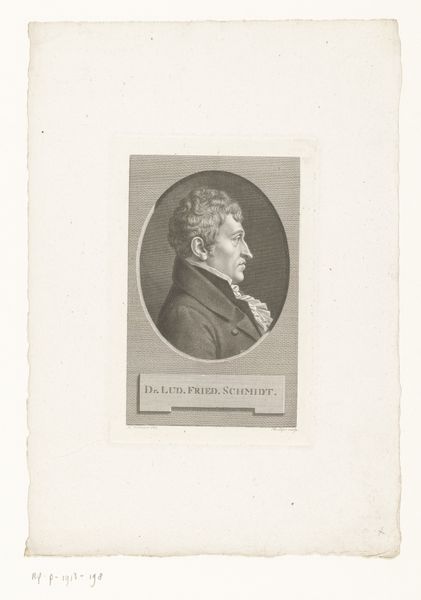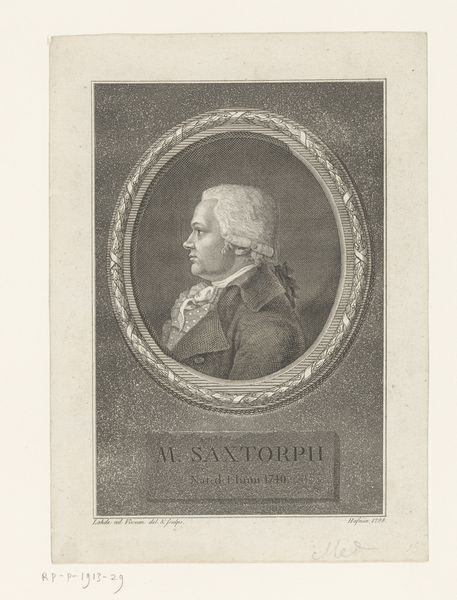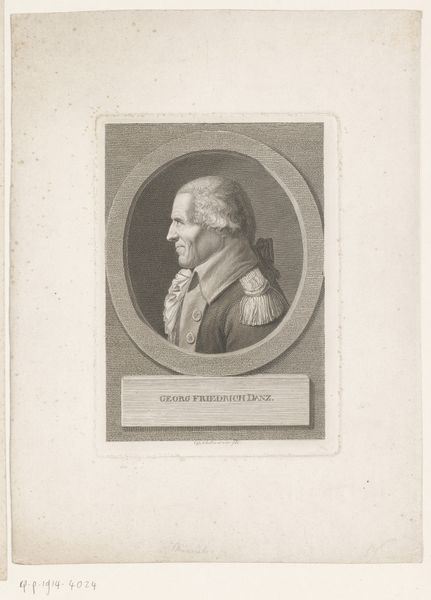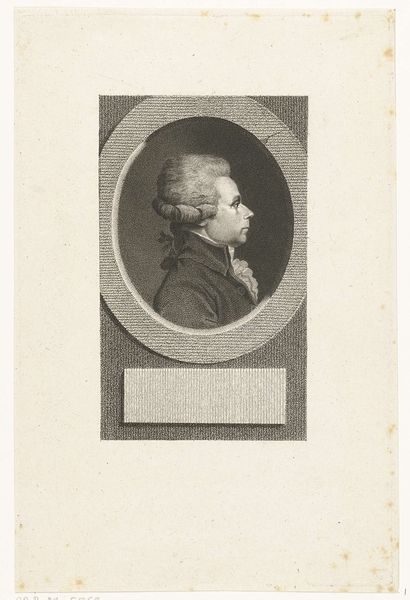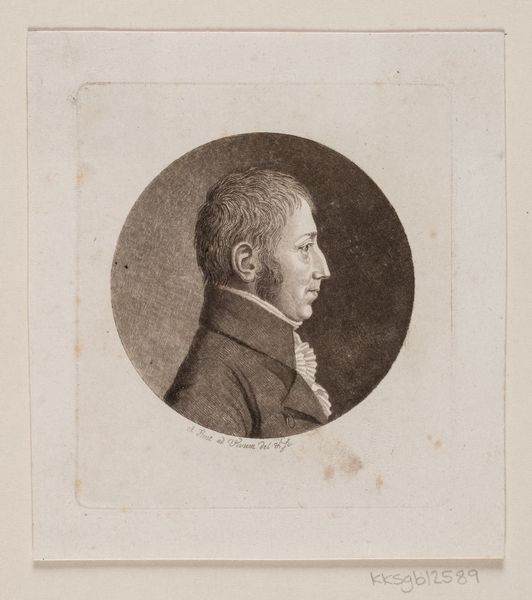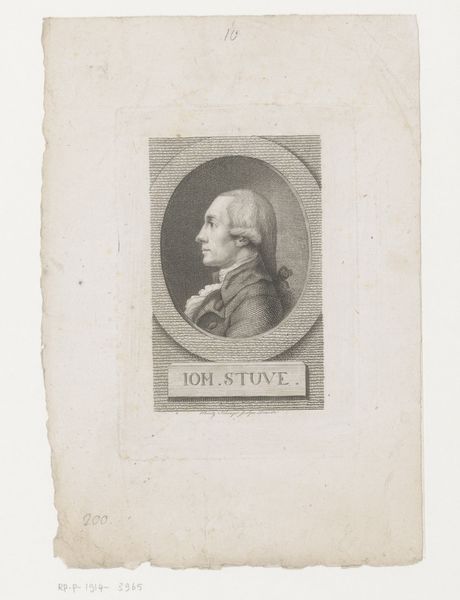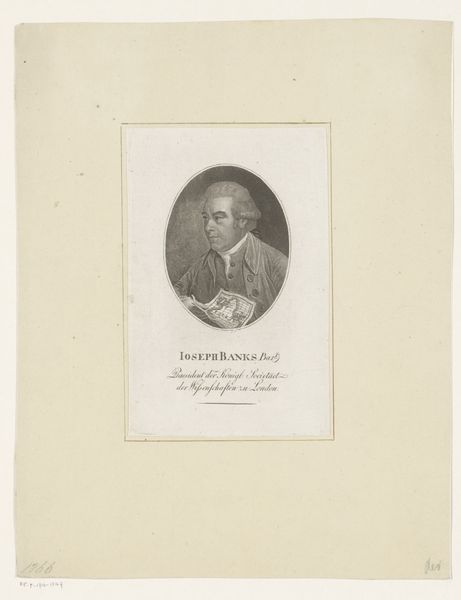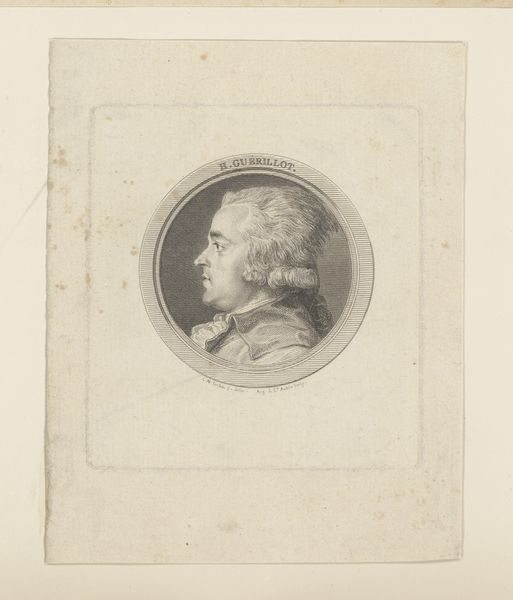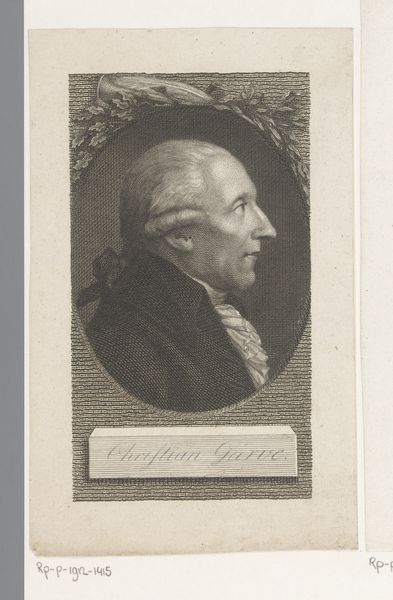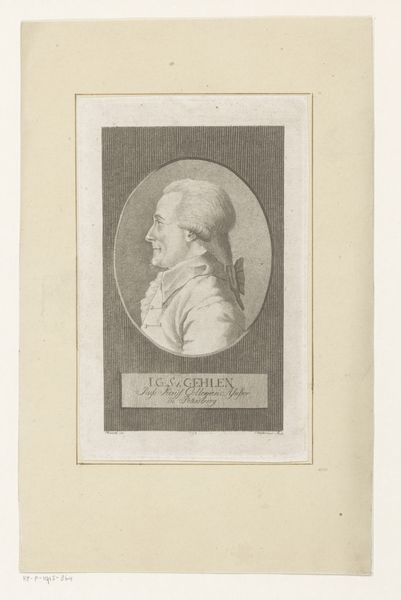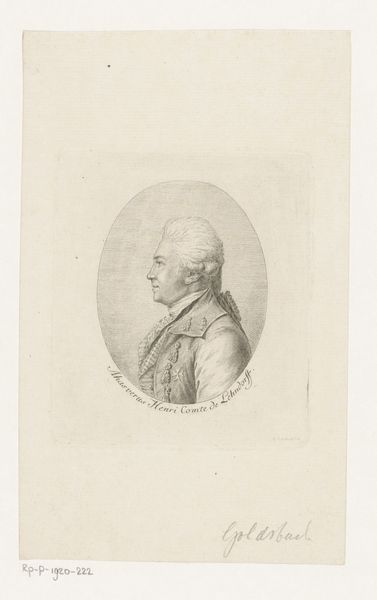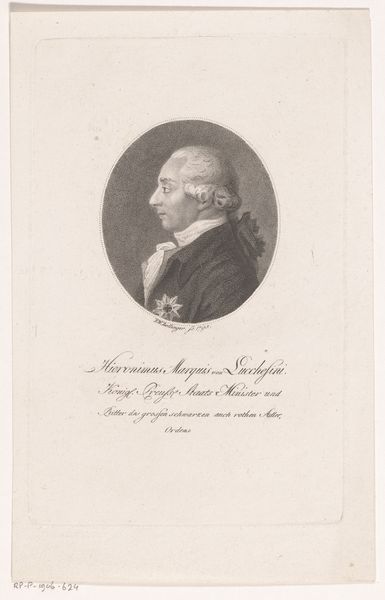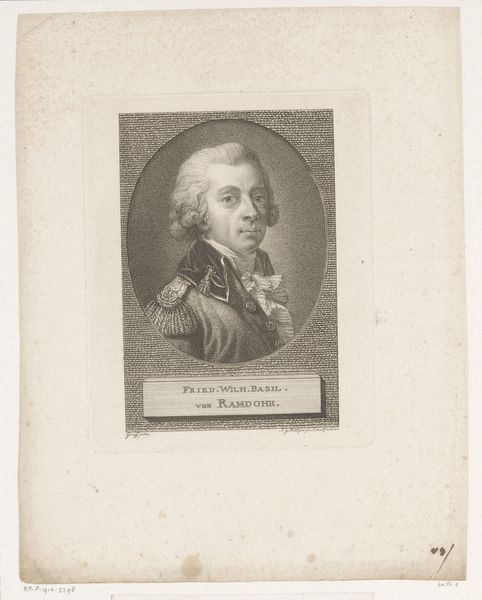
drawing, engraving
#
portrait
#
drawing
#
neoclacissism
#
figuration
#
history-painting
#
academic-art
#
engraving
Dimensions: height 187 mm, width 124 mm
Copyright: Rijks Museum: Open Domain
Curator: Welcome. Before us is an engraving from 1795 titled "Portret van Christian Gottfried Schultze," by Johann Christian Benjamin Gottschick. Editor: It strikes me as very austere, almost clinical. The cool grays and regimented lines give it a sense of… restrained power, I suppose. Who was Schultze, and how might his identity play into our interpretation? Curator: Christian Gottfried Schultze was a prominent German jurist and academic. Understanding his position in society is vital. Engravings like these played a significant role in shaping public perception. They were tools for disseminating ideas about status and authority during a period of great social upheaval. How does this specific portrait engage with prevailing social norms? Editor: I think the emphasis on precision is interesting. It's almost a fetishization of detail - the tiny lines used to create shadow, the meticulously rendered wig. To me, it suggests an effort to project an image of reason, perhaps even an effort to control how he was viewed by the masses during this revolutionary period, when existing power structures were actively being questioned. The rigidity reads as a defense. Curator: That rigidity could also reflect the broader aesthetic trends of Neoclassicism, with its emphasis on order, rationality, and idealized forms derived from classical antiquity. These artistic preferences certainly reflected and supported the dominant cultural and political values, as the powerful often utilized art as means to propagate cultural supremacy. Editor: Absolutely. The artist seems deeply concerned with conveying a specific type of masculine intellect and respectability, yet it subtly raises issues of representation and the inherent biases of the medium, when understanding that these portraits were not candid portrayals, rather manufactured facades that privileged certain narratives over others. What if there were voices that disagreed with the way his portrait was constructed for public viewership? Curator: An intriguing point to consider, indeed. These images also reveal the power of institutions to shape how individuals were perceived in the long term. Editor: I’m leaving with new questions about how we historicize individuals who contribute to these monolithic structures.
Comments
No comments
Be the first to comment and join the conversation on the ultimate creative platform.
